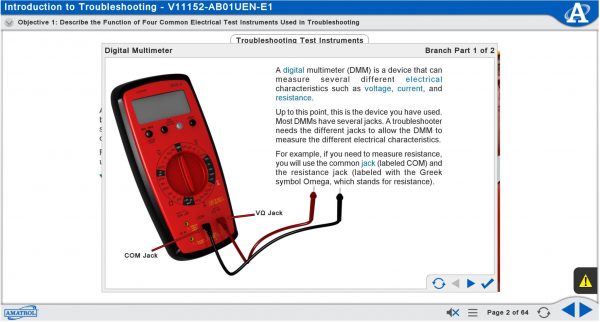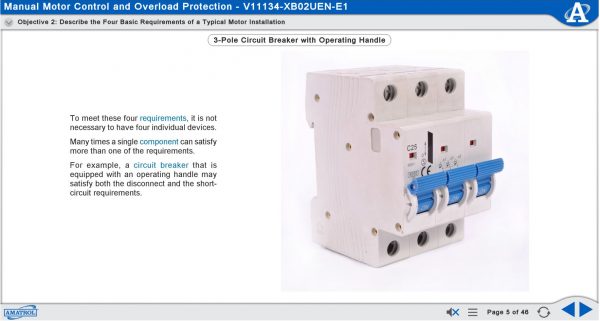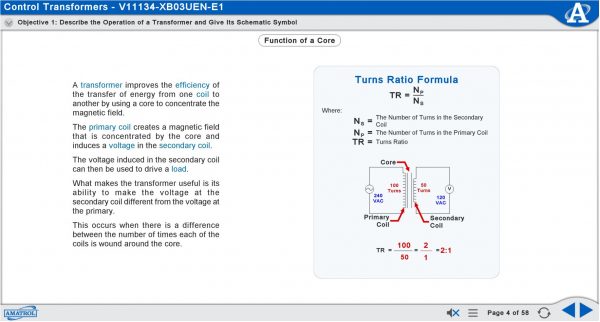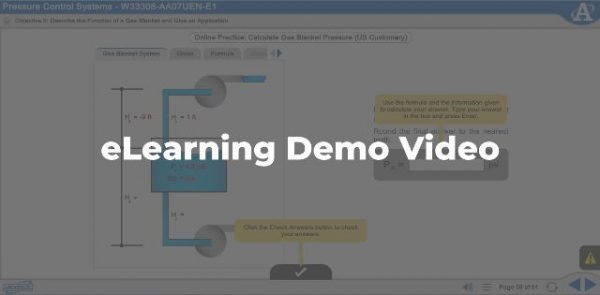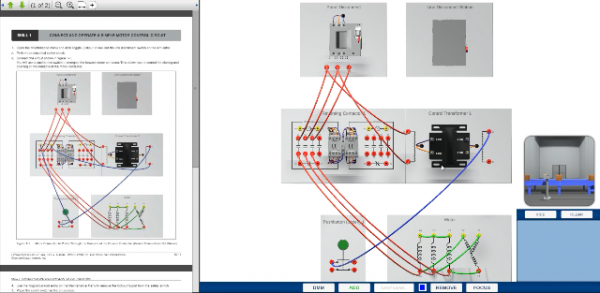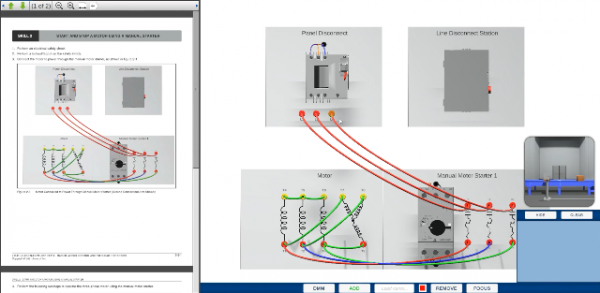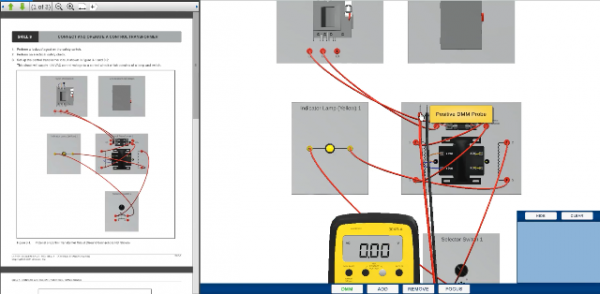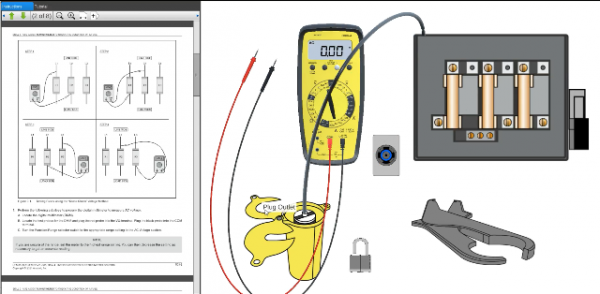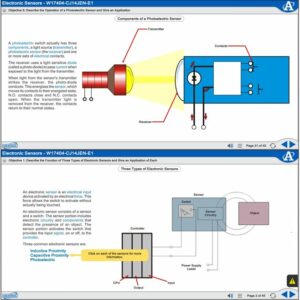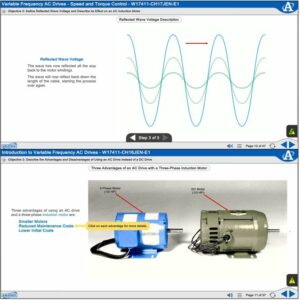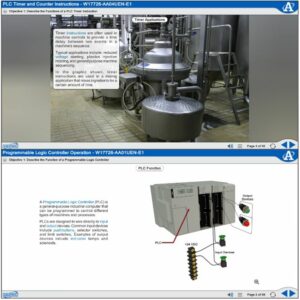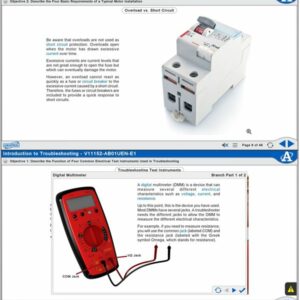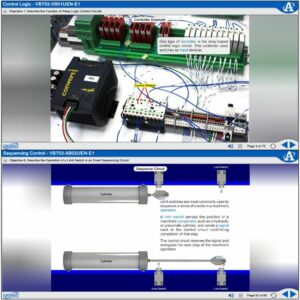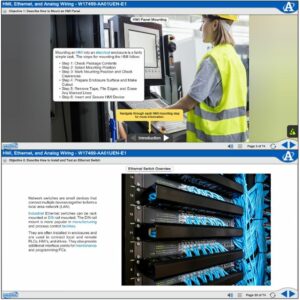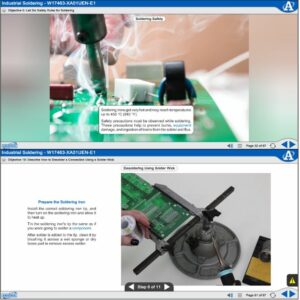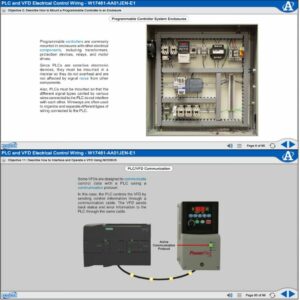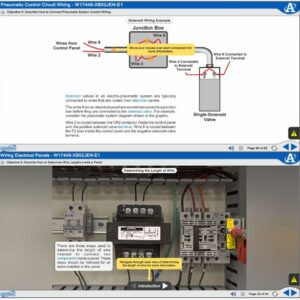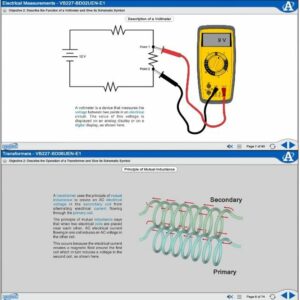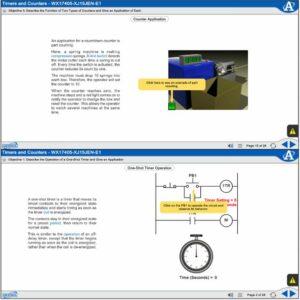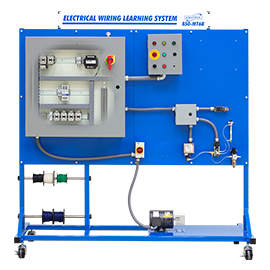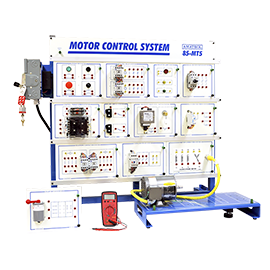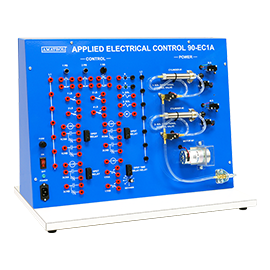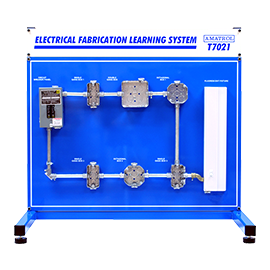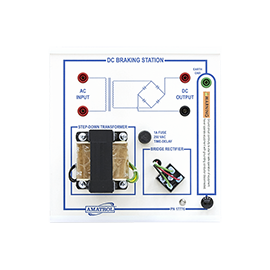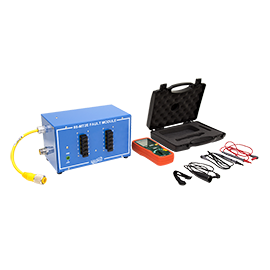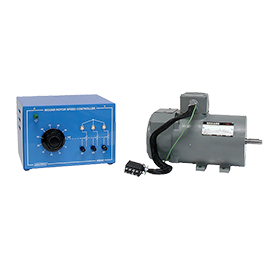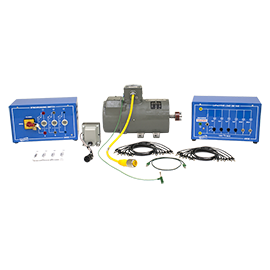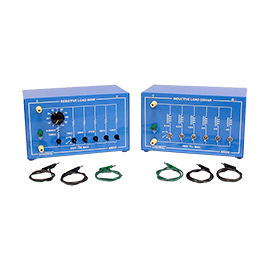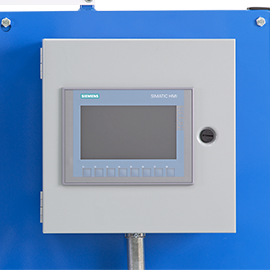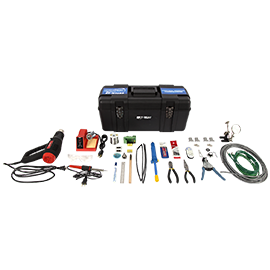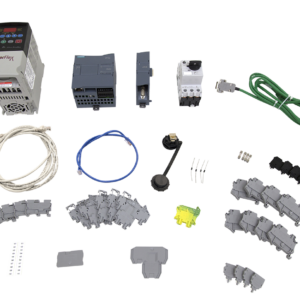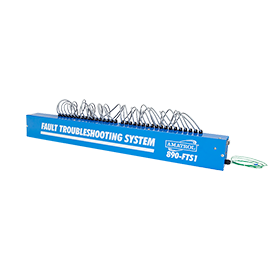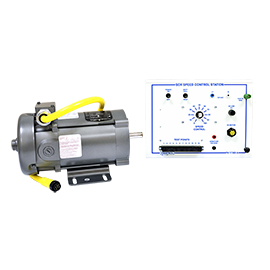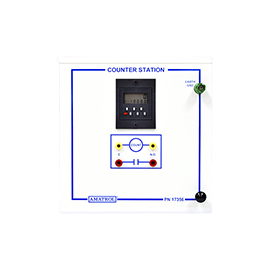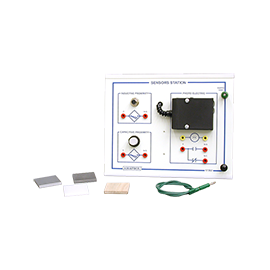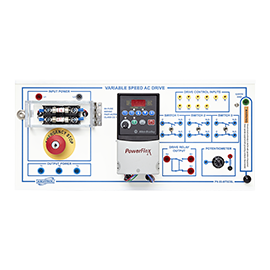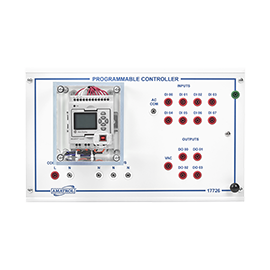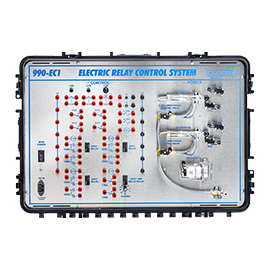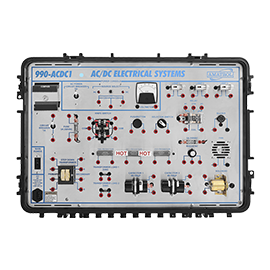Amatrol's portable electrical motor control troubleshooting eLearning courses cover important topics, such as:
Introduction to Electric Motor Control
Learners begin with an introduction to electric motor control, including electrical safety, three-phase power, disconnects and protective devices, and three-phase motors. Individual lessons focus on topics like five common standards associated with electrical control, operation of three-phase power, why time-delay fuses are used with motor starting circuits, and the operating data on a motor’s nameplate. Learners will also practice skills, including performing a lockout/tagout, using a voltmeter to verify supply voltage, sizing a circuit protection, and connecting and operating a single-voltage three-phase motor.
Manual Motor Control and Overload Protection
Learners will study the manual components of motor control and overload protection, including manual motor stater operation. Individual lessons focus on topics like five functions of motor control, the functions of two types of manual starters, the function of three types of overloads, and the operation of a magnetic overload. Learners will also practice skills, including connecting/operating a simple motor control circuit, starting/stopping a motor using a manual starter, testing low-voltage protection capabilities of a manual starter, and setting the trip level of a bimetallic overload.
Control Transformers
Learners using Amatrol’s electric motor control eLearning course will study basic principles of control transformers, including an introduction to transformers, control transformer operation, and control transformer applications in a machine control. Individual lessons focus on topics like how turns ratios are calculated, the functions of four basic components of an electrical control circuit, function and operation of a control transformer, and operation of a separate control circuit. Learners will also practice skills, including calculating the turns ratio of a transformer, connecting a control transformer given the line voltage, and testing and sizing a control transformer.
Control Ladder Logic
In this module, learners will study control ladder logic concepts, including electrical control system basics, ladder diagram basics, and logic elements. Individual lessons focus on topics like three steps of a control process, functions of a ladder diagram, six elements of control logic, and the operation of NOT/NOR/NAND logic circuits. Learners will also practice skills, including connecting and operating a basic electric control circuit, drawing a ladder diagram of a control circuit, connecting and operating an AND/OR logic, and connecting and operating a NOT/NOR/NAND logic circuit.
Control Relays and Motor Starters
As they continue through the electric motor control eLearning modules, learners will study components of control relays and motor starters, including magnetic motor starters, two-wire control, and three-wire start/stop control. Individual lessons focus on topics like the function/operation of a control relay, the operation of a magnetic motor starter, the operation of a two-wire motor control circuit, and the function/operation of a push-to-test pilot light. Learners will also practice skills, including connecting/operating a memory logic circuit, connecting/operating a magnetic motor starter connected to a three-phase motor, connecting/operating a two-wire motor control circuit, and designing a multiple operator station three-wire control circuit.
Reversing Motor Control
Learners will study components and concepts of reversing motor control, including manual motor reversing, reversing magnetic motor starter, interlocking for reversing motor control, modes of operation, and H-O-A control. Individual lessons focus on topics like the NEMA and IEC standard for reversing the rotation of a three-phase motor, function/operation of a reversing magnetic motor starter, three interlocking methods used in reversing motor control, the operation of two types of motor jogging circuits, and the operation of a hand-off-automatic motor control circuit. Learners will also practice skills, including connecting/operating a drum switch to a reverse motor, designing a motor reversing circuit that uses a drum switch and a magnetic motor starter, connecting/operating a reversing motor circuit with mechanical and auxiliary contact interlocking, connecting/operating a control circuit to jog a motor, and designing a hand-off-automatic motor control circuit.
Automatic Input Devices 1
In this module, learners will study automatic input devices, including limit, float, and pressure switches, and sequence control. Individual lessons focus on topics like the functions of four types of automatic input devices, operation of a pump control circuit, operation of a pressure switch, and the function of a sequence control circuit. Learners will also practice skills, including connecting/operating limit/float/pressure switches, designing an overhead door motor control circuit, designing a pump control circuit that includes an H.O.A. operation, and connecting/operating a sequence control circuit.
Basic Timer Control
To conclude Amatrol’s Electric Motor Control eLearning course, learners will study basic timer controls, including on-delay timers, off-delay timers, one-shot timer operation, and repeat cycle timer operation. Individual lessons focus on topics like the function of two types of timer relays, the operation of an off-delay timer relay, the operation of a one-shot timer, and the operation of a repeat cycle timer. Learners will also practice skills, including connecting/operating an on-delay timer circuit, designing a motor control circuit to perform time-driven sequencing, connecting/operating a timed one-shot time delay relay, and designing a timed repeat cycle motor control circuit.
Troubleshooting
The portable electrical motor control troubleshooting eLearning courses also allow learners to practice real-world troubleshooting. Troubleshooting skills include testing an indicator lamp, manual switch, control relay, motor contactor, overload relay, and many more!



